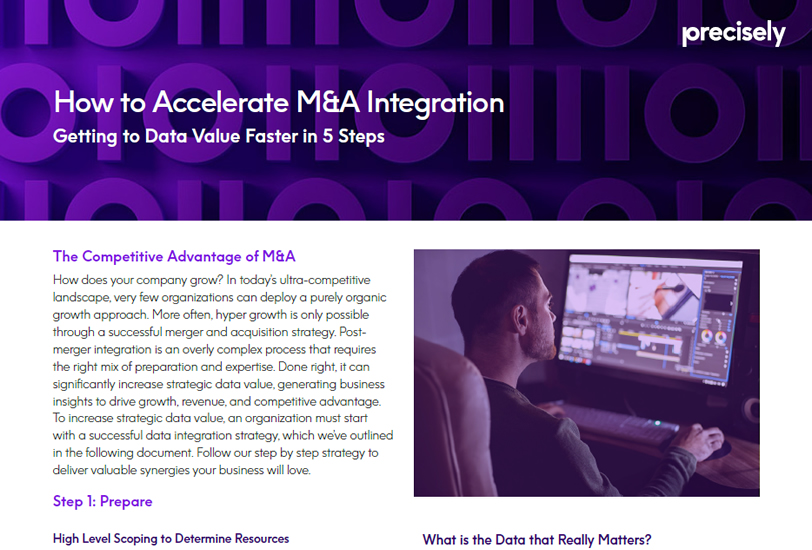White Paper
How to Accelerate M&A Integration
The Competitive Advantage of M&A
How does your company grow? In today’s ultra-competitive landscape, very few organizations can deploy a purely organic growth approach. More often, hyper growth is only possible through a successful merger and acquisition strategy. Post-merger integration is an overly complex process that requires the right mix of preparation and expertise. Done right, it can significantly increase strategic data value, generating business insights to drive growth, revenue, and competitive advantage. To increase strategic data value, an organization must start with a successful M&A integration strategy, which we’ve outlined in the following document. Follow our step by step strategy to deliver valuable synergies your business will love.
Step 1
Prepare High Level Scoping to Determine Resources Successful M&A comes down to three key aspects: diligent planning, cross-functional coordination, and execution of the plan. As you transition into “post close” preparations, you need to begin developing a high-level plan and scope, which will continue to be refined and detailed throughout all phases of the integration. The transaction services agreement (TSA) is a document that defines how long the acquired company will continue to run systems and manage data. It is the rallying point of any M&A event. Since there are additional costs associated with this period, the main goal is to exit the TSA quickly by avoiding delays and obstacles. Not paying enough attention to TSAs increases the risk that the players will leave value on the table. Upfront planning is vital, as poor planning is often the cause of issues that extend the TSA exit timeline.
What Type of Integration will you be Supporting?
IT integrations need the support of a coherent strategy to see what makes the most sense based upon the M&A integration objectives. To effectively scope, you need to know what the overall business objective of the M&A is and the type of integration that supports it.
There are three main categories of integrations:
- Fully Integrated: All operations will be standardized on one platform
- Semi-Integrated: Some operations will be standardized while others will remain
- Independent: Both entities will continue to run on separate platforms
Read this whitepaper and explores how a successful M&A integration strategy, will deliver valuable synergies your business will love.
